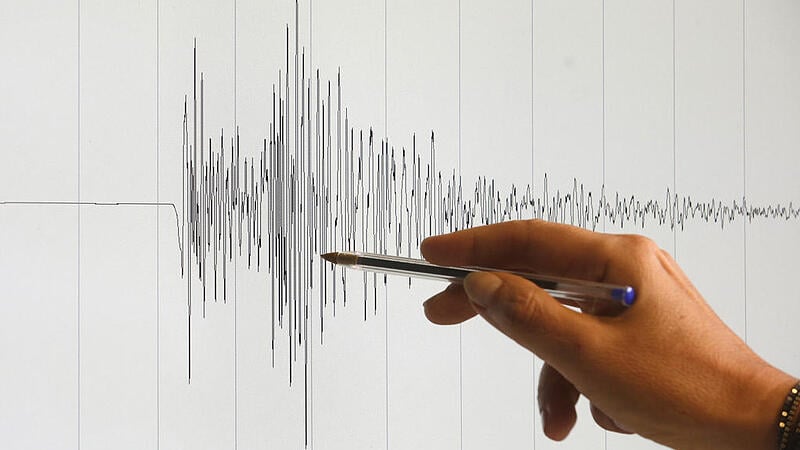Image: APA
The quake could be felt near the epicenter. No damage to buildings has been reported so far. According to GeoSphere, these are not to be expected from earthquakes of this magnitude.
The earthquake service is asking the public to provide feedback on the possible effects of the earthquake. This can be done via a web form http://www.zamg.ac.at/bebenmelde, the QuakeWatch Austria app http://onelink.to/3km3ee and by post to the following address (postage paid by the recipient): Austrian Seismological Service GeoSphere Austria – Federal Institute for Geology, Geophysics, Climatology and Meteorology Hohe Warte 38, 1190 Vienna.
Above average number of earthquakes
In 2023, around 10,300 seismic events were registered worldwide using the Geosphere Austria earthquake service station network. Around 1,300 earthquakes were localized in Austria, 78 of which were felt by the population. In addition, four earthquakes from neighboring countries were felt in Austria in 2023, meaning there were a total of 82 noticeable earthquakes in this country, the strongest of which caused minor damage such as cracks in the plaster.
“The value is above the average of the last few years of 54 earthquakes per year, but within the range of the usual strong fluctuations from year to year,” Geosphere seismologist Rita Meurers was quoted as saying in a broadcast on Friday, “2022 and 2021 were slightly more, with 87 and 106 noticeable earthquakes, respectively.”
Only minor damage
The strongest earthquakes of the year in Gloggnitz (Lower Austria) and St. Veit an der Glan (Carinthia) caused some minor damage such as cracks in the plaster. The strongest earthquake of the year occurred on March 30th around two kilometers east-northeast of Gloggnitz in southern Lower Austria: with a magnitude of 4.2, violent tremors were reported in the epicenter. The earthquake around St. Veit an der Glan reached a magnitude of 3.8 and shook the area on April 2nd.
The earthquakes in St. Michael in Upper Styria as well as in Schwaz and Jenbach (both Tyrol) were also felt violently. There were no major building damages caused by earthquakes in 2023. The number of felt events remained about the same in 2023 as in the previous year, while the number of instrumentally registered earthquakes in Austria was around 1,300, around 40 percent lower than in 2022.
Series of earthquakes in Gloggnitz
In 2023, 39 earthquakes occurred in Lower Austria that were felt by the population. This particularly high value is due to an extraordinary series of earthquakes near Gloggnitz. Styria is in second place with twelve noticeable events. This is followed by Tyrol and Carinthia, each with eleven noticeable earthquakes. Three felt earthquakes occurred in Upper Austria and one in Burgenland.
No noticeable earthquakes were localized in Vorarlberg, Salzburg and Vienna. Four earthquakes were felt in Austria from abroad; the epicenters were in Croatia, Slovenia, Italy and Germany.
Almost 12,000 reports
Around 11,900 perception reports were received by the Austrian Seismological Service via the online perception form of the Geosphere Austria earthquake service and the “QuakeWatch Austria” app, which has been available since March 2021. More than 3,100 reports from the population were sent on the occasion of the strongest earthquake in Gloggnitz, Lower Austria.
My themes
For your saved topics were
new articles found.

info By clicking on the icon you can add the keyword to your topics.
info
By clicking on the icon you open your “my topics” page. They have of 15 keywords saved and would have to remove keywords.
info By clicking on the icon you can remove the keyword from your topics.
Add the topic to your topics.
Source: Nachrichten




